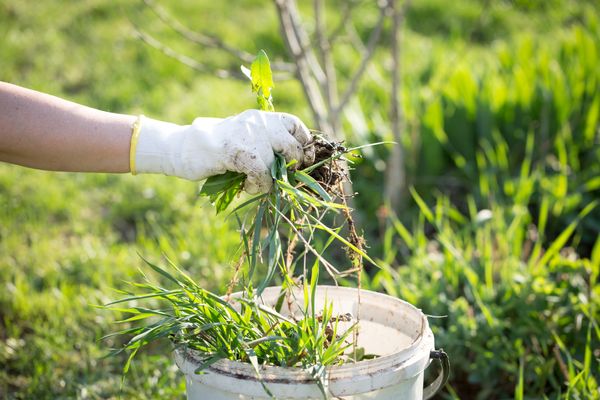Every gardener will tell you that weeds are the worst. They crowd out your plants, suffocate them, and starve them of water and sunshine. Weeds may destroy a whole crop if they are not controlled in time. Nonetheless, there are several options for maintaining a weed-free garden. This article will discuss methods for controlling weeds by weed control calgary company.
Table of Contents
Mulching for Weed Control
Mulching is a great method used for weed control. Mulch is a covering spread over soil to prevent weeds from growing while keeping the soil wet and maintaining a consistent temperature. Wood chips, straws, grass clippings, and even leaves can all be used to create mulch. The organic matter in mulches breaks down over time, enriching the soil with essential nutrients.
Be sure to use a thick layer of mulch (at least 2 to 3 inches) to keep weeds at bay. As a result, the weed seeds won’t be able to germinate since they won’t receive enough light. Furthermore, mulching keeps soil wet so you can water the same less frequently.

Hand Weeding
Weeding by hand is a time-tested technique for keeping your garden free of unwanted plants. Though time-consuming, manual weeding is an excellent way to get rid of weeds without harming your plants. The approach excels at getting rid of weeds that are either near your plants or in inaccessible places.
You’ll need gloves and a weed puller or trowel to do any hand weeding efficiently. Carefully loosen the dirt surrounding the weed using a weed puller or trowel, then remove the weed from the earth by its roots.
Chemical Weed Control
Chemical weed management is never ideal, but it may be essential in some situations when organic techniques fail. Sprays, granules, and concentrates are just some of the many weed-killing chemical herbicides that can be purchased.
The use of chemical weed control requires strict adherence to the manufacturer’s guidelines. Avoid spraying on windy days to keep the herbicide from floating into your plants, and always wear protective clothes and gloves while handling any pesticide.
Cover Crops
Planting cover crops is another efficient method of weed management. Weeds are kept at bay, when the soil is healthier; hence growing cover crops can add minerals during this time. Attracting helpful insects to your garden is another function of cover crops like bee and butterfly flowers.
Choose a cover crop that will thrive in your area’s climate and soil when you plant it. Clover, buckwheat, and ryegrass are the most often used cover crops. To enhance soil health, plant the cover crop in the fall and work it in during the spring.
Weed Barrier Fabric
The synthetic weed barrier cloth limits sunlight and suppresses weed growth. This material is available in rolls and may be trimmed to meet your garden’s dimensions. In particular, weed barrier cloth effectively reduces weed growth on pathways and between garden rows.
To employ weed barrier fabric, spread it over the soil and anchor it with posts or rocks. Make holes in the cloth for planting, then cover it with mulch to enhance its aesthetic appeal.
Final Thoughts
Managing weeds is an essential component of keeping a healthy garden. You can maintain a weed-free garden and assure a plentiful harvest using mulch, hand weeding, chemical weed control, cover crops, and weed barrier fabric. Enjoy the beauty and plenty that a weed-free garden may give by experimenting with various weed-control techniques.





